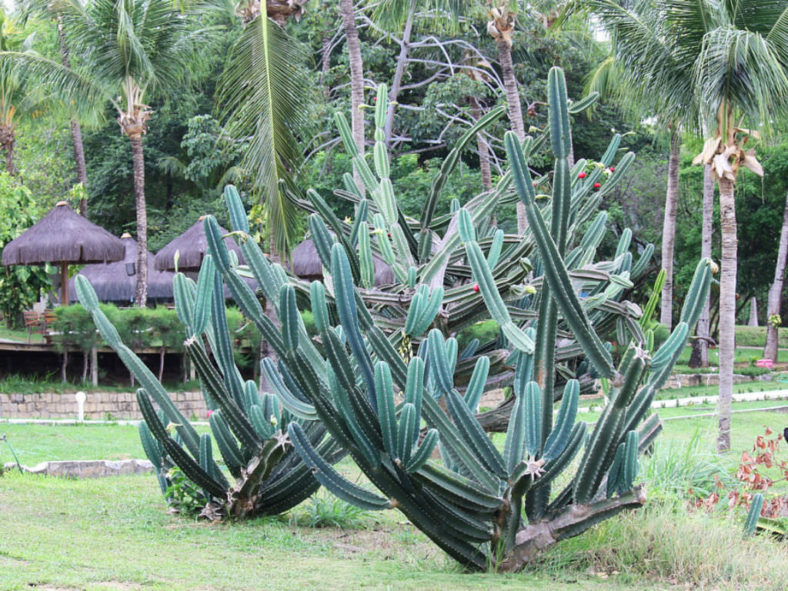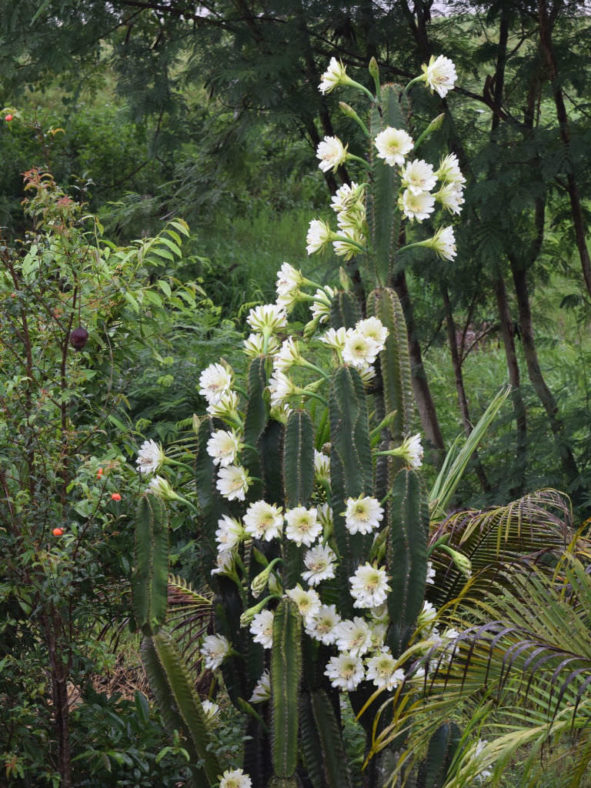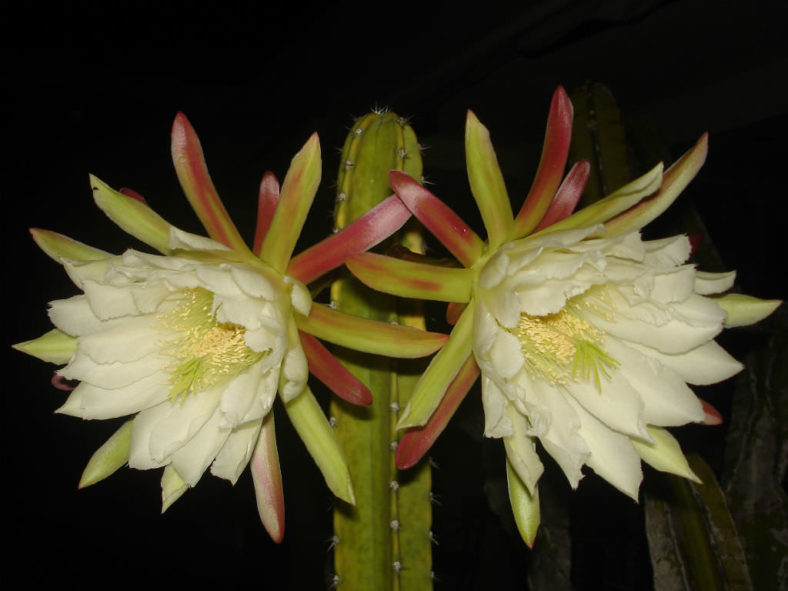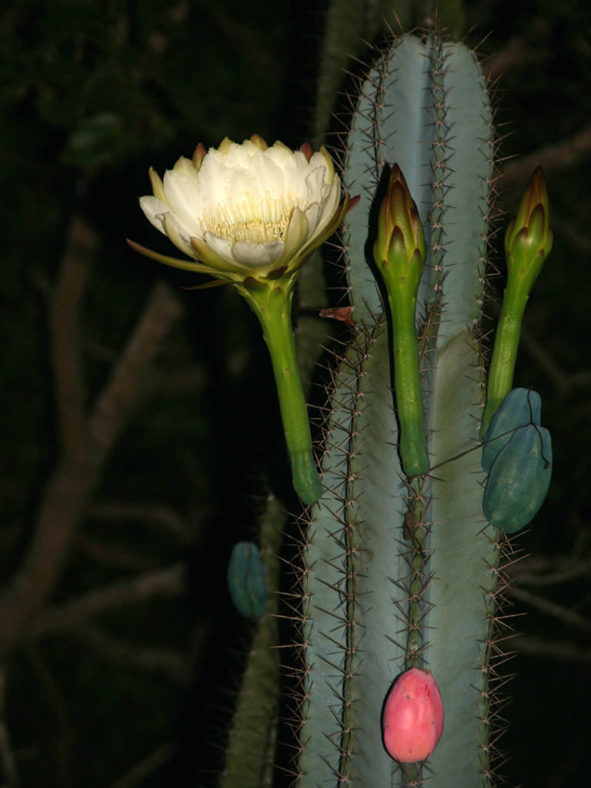Scientific Name
Cereus jamacaru DC.
Common Name(s)
Pleated Cereus, locally known as Mandacaru or Cardeiro
Synonym(s)
Acanthocereus horribarbis, Cactus jamacaru, Cereus horribarbis, Cereus jamacaru var. caesius, Cereus jamacaru var. glaucus, Cereus uruguayensis, Piptanthocereus jamacaru
Scientific Classification
Family: Cactaceae
Subfamily: Cactoideae
Tribe: Cereeae
Genus: Cereus
Etymology
The specific epithet "jamacaru (ja-ma-KAR-oo)" is believed to be derived from the indigenous Tupi word "mandacarú," meaning "spiny bundle."
Origin
Cereus jamacaru is native to the Northeast Region of Brazil.
Description
Cereus jamacaru is a tree-like cactus with thick, blue-green, usually erect branches that grow from a short woody trunk. It can reach up to 33 feet (10 m) in height. The main stem can grow up to 6.6 feet (2 m) tall and 2 feet (60 cm) in diameter. The branches can reach up to 6 inches (15 cm) in diameter and have 4 to 6 ribs lined with clusters of spines. Each areole bears 10 to 30 yellow to brown spines that can grow up to 0.8 inches (2 cm) long.
The white flowers appear in spring and last one night only. They can reach up to 12 inches (30 cm) in length and 8 inches (20 cm) in diameter. The edible fruits are fleshy, pink to red berries, measuring up to 4.8 inches (12 cm) long and up to 3.2 inches (8 cm) in diameter. They contain a delicious white pulp with black seeds.

How to Grow and Care for Cereus jamacaru
Light: Cereus cacti like full sun. They can handle partial shade but thrive during the summer in direct sunlight. A sunny window is a good spot to grow a Cereus indoors.
Soil: These cacti do not like to have "wet feet" and must be grown in well-draining soil. Use commercial soil mixes for cacti and succulents, or make your own potting mix.
Hardiness: Cereus jamacaru can withstand temperatures as low as 25 to 50 °F (-3.9 to 10 °C), USDA hardiness zones 9b to 11b.
Watering: From spring to fall, during the active growth period, water thoroughly, but allow the soil to dry out before watering again. With the arrival of fall, gradually reduce the watering frequency.
Fertilizing: During their growing season, Cereus cacti like regular fertilizing. A balanced, water-soluble fertilizer, diluted to 1/4 strength, can be added to each watering. Do not feed during the winter.
Repotting: While Cereus cacti are young, it is recommended to repot each year in early spring to provide them with fresh soil, inspect the root system, and move them to larger pots if necessary.
Propagation: Using stem cuttings is the easiest method to propagate Cereus because seed propagation is a slow process.
Learn more at How to Grow and Care for Cereus.
Toxicity of Cereus jamacaru
Cereus cacti are non-toxic to humans or animals.
Links
- Back to genus Cereus
- Succupedia: Browse succulents by Scientific Name, Common Name, Genus, Family, USDA Hardiness Zone, Origin, or cacti by Genus
Photo Gallery
Click on a photo to see a larger version.


